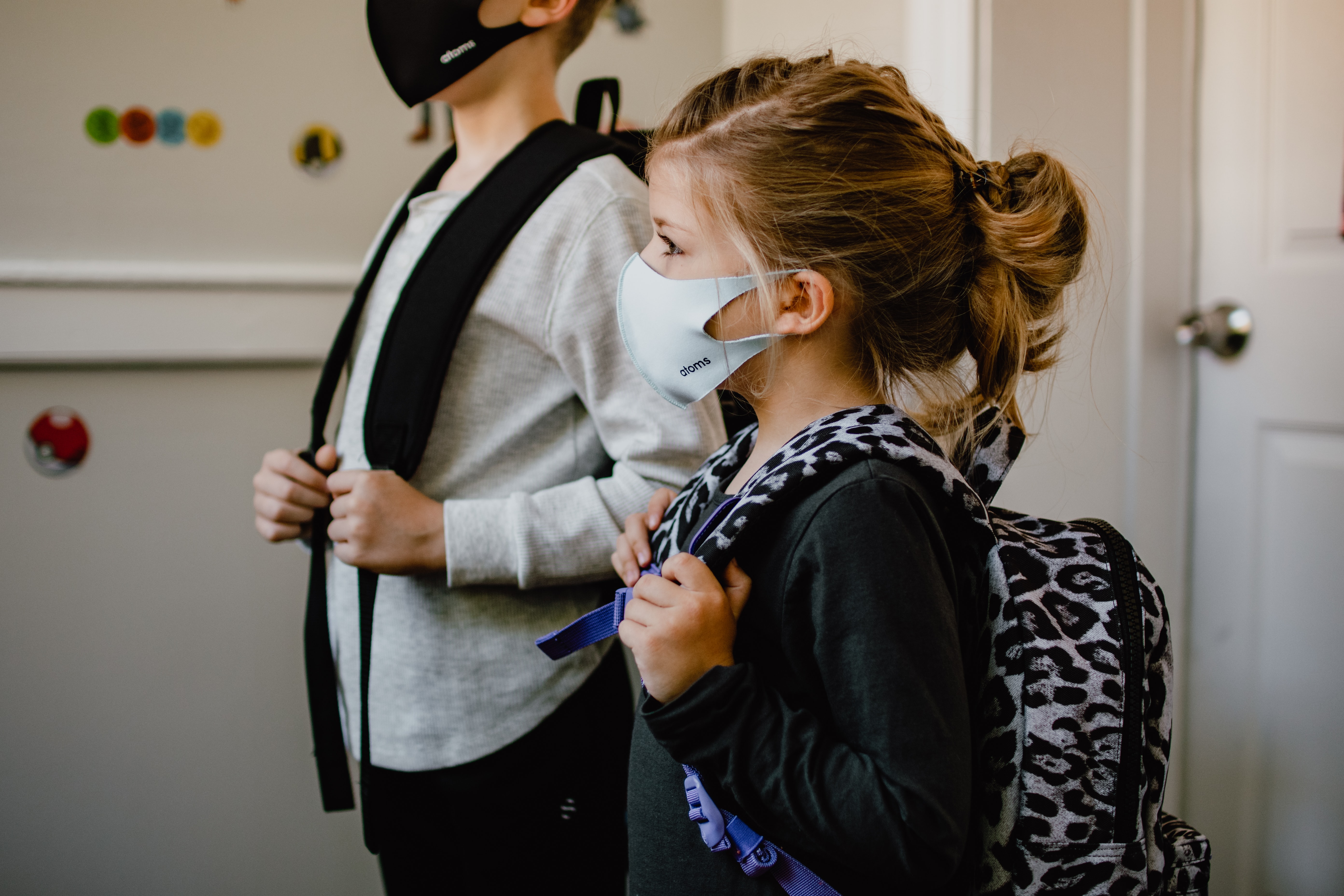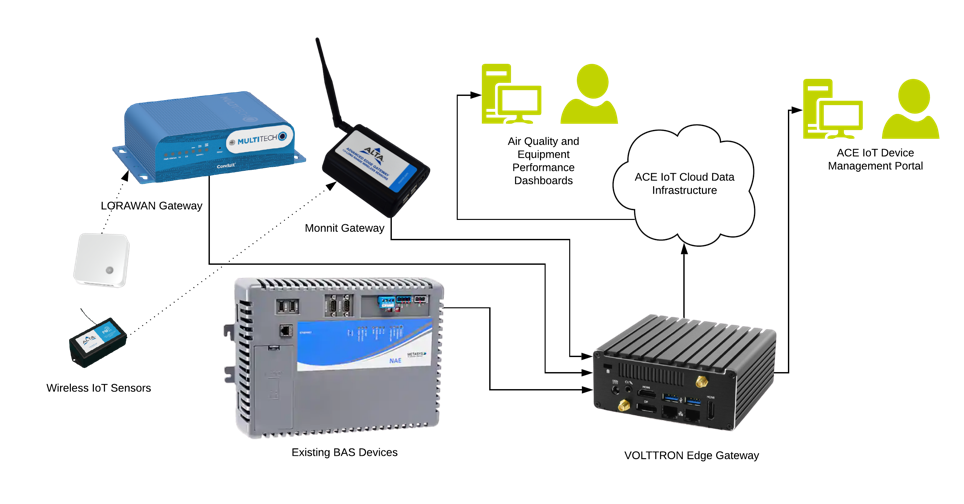Responding to the COVID-19 epidemic and dangerous air quality due to seasonal summer forest fires, an increasing number of organizations are deploying networks of indoor air quality (IAQ) sensors in their buildings. For most organizations, the deployment of IAQ sensors involves three primary challenges: 1) an assessment of air flow in their building(s), 2) a decision about how best to collect IAQ data (via wired or wireless networks, e.g) and 3) the development of a plan to incorporate the new IAQ data into their existing procedures and processes related to facilities management. Several forward-looking organizations are examining how the open-source Eclipse VOLTTRON technology can enable their organization to integrate new IAQ data with data collected by existing systems in their buildings (e.g., Building Automation Systems).
Air Changes, Filtration and Ventilation are a Key to Reopening Buildings Safely
As anyone who has school-aged children knows well, schools across the country have been hard at work to ensure that classrooms are safe for teachers and students. Ensuring classrooms have appropriate levels of ventilation is a top priority. In July 2020 the American Society of Heating Refrigeration and Air Conditioning Engineers (ASHRAE) released updated recommendations for schools and universities related to topics including ventilation, filtration and HVAC maintenance. Along with guidance from the Centers for Disease Control and local health departments, the ASHRAE recommendations have become a centerpiece of re-occupancy plans.
For this reason, the last four months have been extremely busy for entities working with schools to conduct air flow tests and enable appropriate levels of air change rates throughout a building. Ben Cenedella, part owner of Nexus Consulting of Whately, MA, reports that their team has conducted airflow testing for more than 40 schools in Western Massachusetts since August.
The phone started ringing in July and has not stopped. At times, we have felt like rock stars. HVAC is not usually top-of-mind. This year, the school leaders we work with are thirsty for HVAC data. Initially, they need data establishing whether their schools’ existing systems can deliver the recommended air changes. Once the systems are in-place and working, they are looking for real-time data that either confirms fresh air is circulating in their classrooms or alerts that there is a problem that must be addressed.
Prior to the emergence of COVID-19, building owners rarely measured air quality continuously. More often, air quality measurements were one-time spot inspections. The demand for the real-time data that Mr. Cenedella references above is new and is driving schools and other building owners/operators to deploy networks of air quality sensors. Washington DC’s Public School (DCPS) system, for example, is deploying a sensor network that will take samples across the school of particulate level (PM 2.5), CO2 levels, Temperature, Humidity, Volatile Organic Compounds (VOCs). The collected data will help DCPS monitor the efficiency of the ventilation and filtration approaches that the school district is using to ensure classrooms have fresh, clean air.

Air flow and data flows
Entities like DCPS are deploying air quality sensor networks because existing building automation systems do not collect the air quality data that ASHRAE recommends. For many organizations, the air quality data will be yet another data source (albeit a very important one) from yet another separate system. This is not ideal. If the data is to be used most effectively, the new air quality data must be integrated into an organization’s existing processes and procedures related to facilities management.
ACE IoT is excited that several of our partners and customers are exploring how to best integrate air quality data with data collected by legacy systems. ACE IoT has developed an application that enables a data flow connecting a LORAWAN or Monnit gateway to an open source Eclipse VOLTTRON instance. Using the MQTT or LORAWAN protocols, ACE IoT can create a direct link between the sensor gateways and the existing building infrastructure using a deployed Eclipse VOLTTRON instance. The network diagram below illustrates ACE IoT’s approach:

A new data flow between air quality sensor data and the state+operation data generated by legacy equipment controlling ventilation means that the data is more easily integrated into an organization’s facilities management workflows. Indeed, when integrated, the two data sources allow an organization to monitor air quality in real-time and more quickly diagnose equipment malfunctions that contribute to sub-optimal air quality measures.
Please contact info@aceiotsolutions.com to explore how Eclipse VOLTTRON can facilitate valuable data flows between your organization’s existing systems and new air quality sensor networks.
Follow ACE IoT on LinkedIN.


